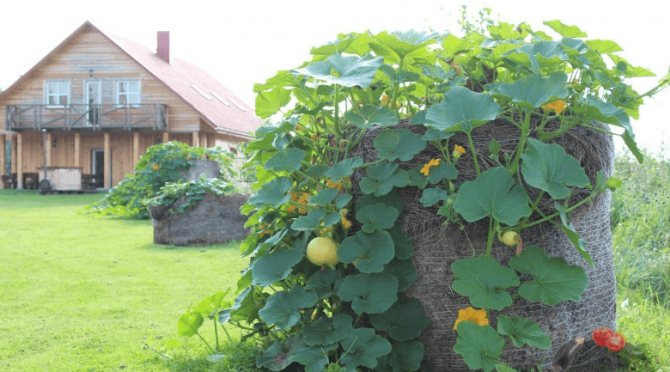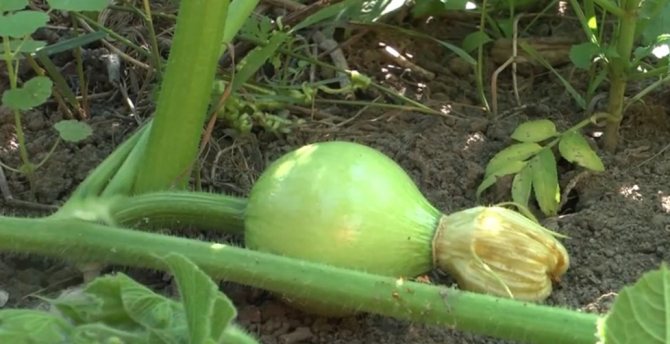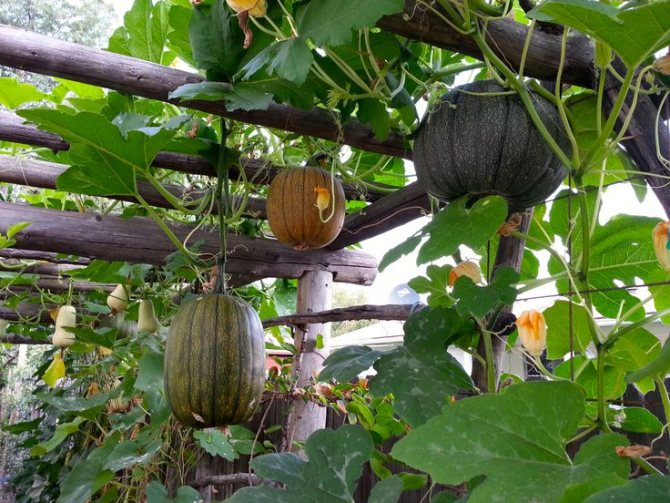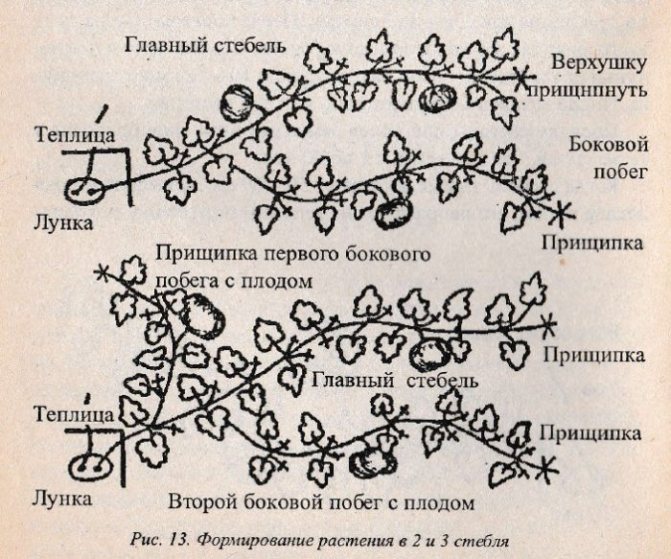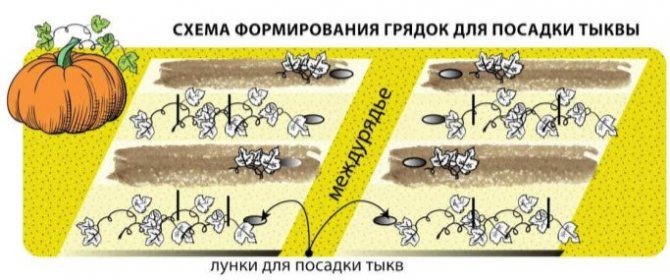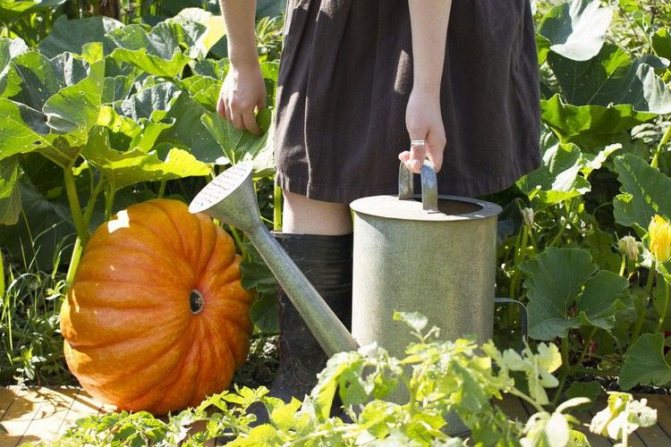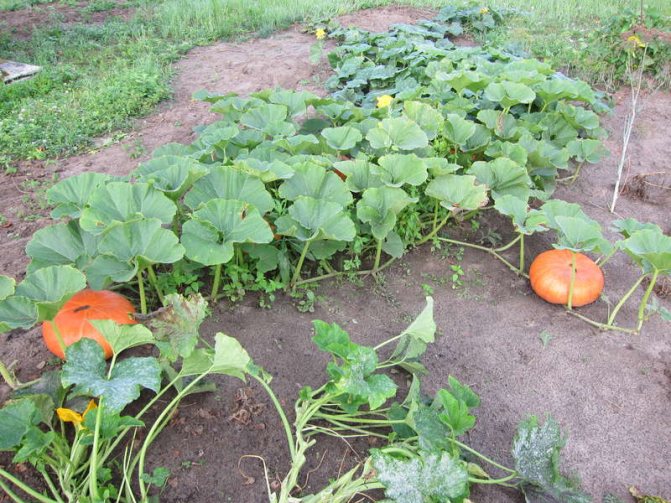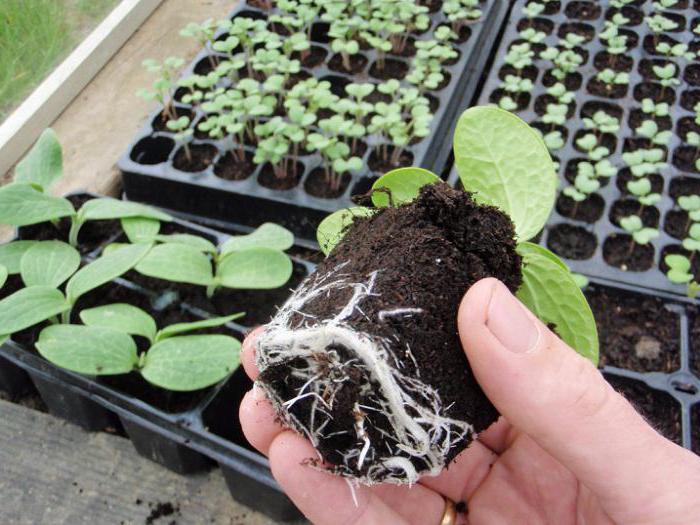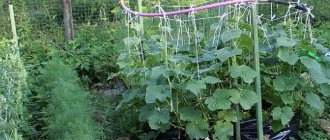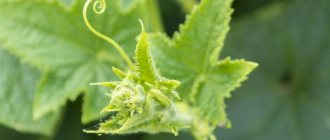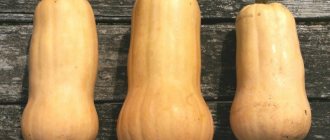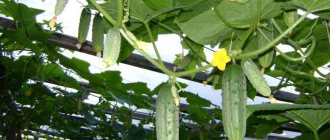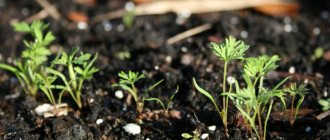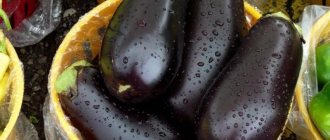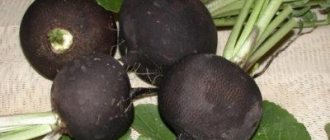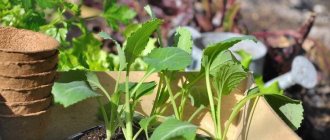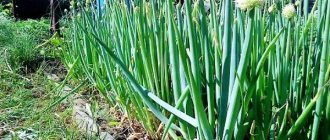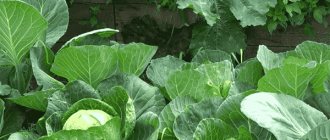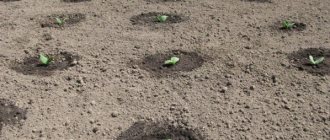Author rating
The author of the article
Yakov Pavlovich
Professor, Head of the Department of Vegetable Growing
Articles written
153
When growing vegetables, the gardener needs to pay a lot of attention to watering, feeding and protecting the beds from pests. It is also important to know how to mold pumpkin bushes outdoors. After all, this culture was bred in Mexico, where, thanks to the hot summer, all the ovaries formed on the bush can fully grow and ripen. With a changeable climate, frequent cold snaps and rains, more than 6 fruits will not be able to fully develop on the plant.
When to pinch
Scourges form from the beginning of growth to the end of the growing season. When their length is 1.5-2 m, pinching can be done.
Manipulations are performed in the morning. Under this condition, the plant will have time to heal the wounds by the evening, and the night dampness and coolness will not be afraid of it. Pruning can be done throughout the day if the weather is cloudy. So that the sun does not harm the culture, the places of the cuts are shaded with a film.
The formation of pumpkin lashes can be carried out at the moment when the first fruit appears on the main stem.
The procedure is performed repeatedly. They do this throughout the summer. The first manipulations can be performed before flowering.
Recommendations
The formation of a bush pumpkin is necessary because she spins too many lashes.
It is also better to carry out this procedure if you want to get large-sized vegetables or if there is a risk of unripe harvest due to weather conditions.
It should be pinched so that at least 4-7 leaves remain above the place of formation of the future fruit
The number of ovaries is also determined taking into account weather conditions: in regions with unfavorable weather and a short summer, a minimum is left.
How to properly shape a climbing pumpkin
It is more practical to plant in the open field in different ways: separately, in groups, with one ovary, with several.
Based on the purpose of growing (for an exhibition, for homemade preparations, etc.), it is determined whether it is necessary to pinch the pumpkin.
There are different ways of performing the procedure, each with a different effect on the quality and quantity of the fruit.
In one whip
Plucking the pumpkin in this way means keeping the main lash. Lateral shoots are removed, on which the ovaries are formed.
The growth point is tacked so that 4-7 leaves remain - they should be placed above the extreme fruit.
In two lashes
To translate into reality this scheme for pinching pumpkins in the open field, perform the following manipulations:
- Leave the strongest lateral stem. It should have one fruit on it. After 5 leaves, pinch the growth point.
- Shoots and leaves are removed from the main stem. Leave 2-3 fruits. There should be at least 4 leaves above the last one.
In three lashes
The scheme provides for the formation of one main pumpkin shoot and two lateral ones. 1-2 fruits are left on the main one, on the rest - 1. After 5 leaves, pinching is performed.
Gardeners with experience recommend using different methods of formation at the same time. One pumpkin - in one stalk, the other - in two, etc. This way you can easily choose the most suitable method.
Formation schemes
The table variety of culture (used for cooking) must be trimmed and tied up. A plant grown to feed livestock or decorate garden beds is not formed to improve flavor. When pruning a bush, the type of pumpkin is also taken into account: multi-vine or bush.
In one whip
The method will allow you to grow several fruits without taking up much space in the garden. Pruning is carried out immediately after the formation of additional lashes and shoots. It is necessary to leave the main stem, on which 2-4 pumpkins have formed. Also, to prevent the appearance of new fruits on the branches, all inflorescences are removed.
In two lashes
Forming a bush in 2 lashes is considered the classic way. During pruning, the plants leave the main stem with 2 fruits and the strongest side one with 1 pumpkin. After the ovaries, 3-5 leaves are left, pinched, and then the branch is added dropwise.
In three lashes
On such a bush, 4-6 medium-sized fruits are formed. During the growing season, you will need to leave the main stem and 2 side ones. At the same time, there should be 2 pumpkins on the main branch, and one on the additional ones. 5 leaves are counted from the last ovary, and then the branch is cut off.
How to properly form a bush pumpkin
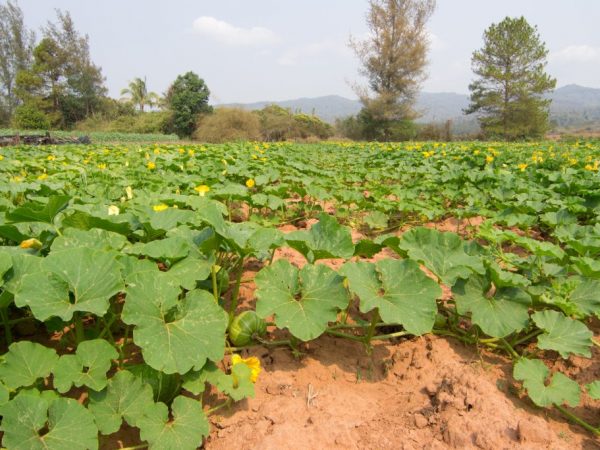
Extra leaves must be removed from the plant.
Such varieties do not grow long shoots, they are compact. But the formation of the pumpkin bush is still performed. Do this according to the following instructions:
- pinch the top;
- remove side shoots and stepchildren, because there are a lot of them in bush pumpkins;
- normalize the number of leaves - those that shade the fruit, pluck.
In mid-August, you need to pinch all growth points. Then the nutrients will be directed to the ripening of vegetables. You can form bush plants in 2 stems. One fruit is left on each of them.
If you form a bush correctly, this will extend the shelf life of the harvested crop. Quality pumpkins can be stored until next season.
Why is this procedure needed
An annual vegetable crop during the growing season forms flowers for future ovaries on the 7th day if there are 3-4 leaves on the stem.
At this time, it is required to decide how much to leave the ovaries and, by pinching, remove the tops of the growing shoots.
Unlike pinching, part of the branch is cut off at the stage of the set fruit so that it develops further.
The main task is to limit the number of ovaries and fruits.
By pinching the shoot, on which female flowers will form again in the future, the gardener controls the number of fruiting branches.
Thus, increased growth and development of lateral branches is triggered, forcing the vegetable crop to redirect its forces to the ripening of vegetables.
Without shaping, pumpkin gives a lot of unripe vegetables and they are not stored for long.
For full ripening of the crop, it is necessary to leave 2-3 branches, which will give about 7 fruits of average size. With a large number of branches left, the plant cannot cope with the load, the vegetables are smaller and do not have time to ripen.
Advantages and disadvantages
Pinching a pumpkin outdoors has a number of positives:
- it is possible to adjust the length of the branch and significantly save space on the personal plot;
- simplifies the care of the bush;
- full development and ripening of fruits is ensured, giving harvests at an earlier date, which is important for regions with cool climatic conditions;
- fertilizers are purposefully used to feed only formed branches and remaining vegetables;
- splintered branches develop better, absorbing the sun's rays evenly and increasing resistance to diseases and pests.
The disadvantages of the procedure include increased labor costs during cultivation, associated with the need for constant monitoring of the appearance of stepchildren.
Useful Tips
If the culture is planted in the open field, it is worth adhering to the following recommendations:
- Pinch the pumpkin stalks so that 4-6 leaves remain above each fruit.
- There is no need to strive to grow many vegetables on one bush. If the gardener wants to get large fruits, you need to leave 1-4 ovaries. The amount depends on the variety and region of cultivation. The excess should be removed without regret. Otherwise, the pumpkin will drop the ovaries or the fruits will begin to rot. Harmful microflora can also develop.
- The scourges are directed southward. Then it will be more comfortable for them to grow.
- The fruits are separated from the ground using plywood or boards. This will prevent rotting and make it easier to care for the pumpkin.
- When performing the formation, it is worth making sure that the ripening fruits are not shaded. It is necessary to remove dried and damaged leaves.
- It is necessary to monitor the health of the culture.
How to choose the right seeds and prepare them for planting
Unfortunately, we never know which seeds are packed in the bags we buy in stores. What exactly grandmothers sell in the markets is also unknown to us. That is, it is clear that this is a pumpkin, but you can never guess which crop seeds are on sale.
And this is important - the point is not even that the pumpkin has a huge variety of varieties and the taste will depend on the variety that you have chosen. And the variety, accordingly, will depend on your preferences - someone likes a potato-flavored pumpkin, and someone likes a melon-flavored pumpkin.
The fact is that the older the pumpkin seeds (like, by the way, cucumbers or zucchini), the better they will grow and the higher the yield will be. Therefore, you need to choose as old as possible seeds.
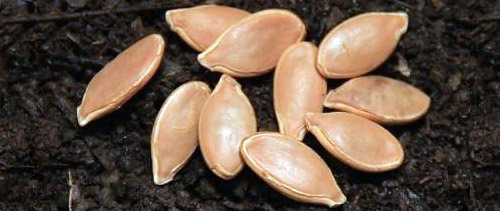

If you do not have stocks of seeds five years ago, then you need to carry out certain manipulations with those that are. That is to say, try to age them by artificially aging. This is easy to do:
- first, the seeds need to be warmed up by simply holding them in the oven or in the sun for several hours. If you decide to keep the seeds in the oven, start at about 20-30 degrees and increase the temperature by 10 degrees every hour. It is not necessary to raise it above 60 - for the last hour the seeds should be "roasted" at a temperature of 50-60 degrees, not higher;
- after that, at night, the seeds must be put in water, having previously wrapped with a piece of gauze;
- and then send them to the refrigerator for several days, just not in the freezer, but simply on a shelf or in a vegetable drawer.
This contrast gives an absolutely stunning result and the germination rate of your planting material will increase significantly.
Caring for a pumpkin after pinching
Long lashes are installed on props. Their height can reach human height. If the culture grows near the fence, you can sprout over it and tie them up.
Digging in
If the plants are on the ground, they are added dropwise. The culture will not be afraid of strong gusts of wind. Long lashes will not get tangled.
Manipulations are performed if 5-6 leaves remain above the fetus. The internodes are sprinkled with soil at a distance of 1 m and watered. Then additional roots are formed, which will help the culture to receive more nutrients, especially during feeding.
The upper part of the lash should be in the sun, otherwise you will not get a crop.
Fertilizer
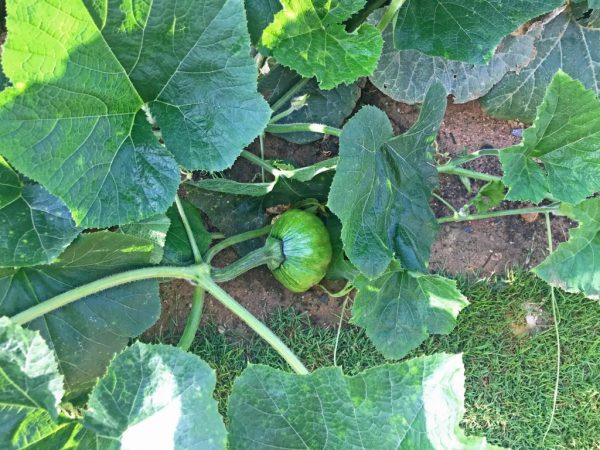

Fertilizers are applied strictly after watering
Produced only after watering, using humus, humus, potassium salt, ammonium nitrate, superphosphate and other substances.
It is worth alternating between mineral and organic types of dressings. For example, you can apply the following solutions:
- 40 g of superphosphate, 30 g of potassium salt, 20 g of nitrate per 10 liters of water;
- 50 g of wood ash, 2 l of slurry.
Fertilizers are not applied if sufficient nutrients have been applied when preparing the site for planting. They will be enough for the entire period of plant development.
Watering
Pumpkin needs plenty of water, especially during flowering and ovary formation.
It is necessary to water in the evening with warm water - 20˚С.After the procedure, it is necessary to remove the weeds and loosen the earth. In the aisles, the soil is sealed to a depth of 12 cm, under the bush - 6 cm. Watering is stopped during the ripening of the fruit.
Stepping
Crop care involves removing unnecessary leaves at all periods of development. Thinning is performed. Extra flowers and fruits are also plucked.
Pollination
If the pinching was performed before flowering, then they look at the possibility of pollination. When the male flowers bloom after the female flowers and there are no insects, it is worth transferring the pollen yourself. To do this, use a soft brush. You can also lean the male flower against the female stigma.
Forming technology
There are several schemes for pinching a pumpkin, while some gardeners approach this event in a complex way: they leave one bush with 1 stem, another with 2, etc.
Form a plant in no more than 3 lashes, because there will not be enough power for more branches.
1 stem
Climbing and bush varieties often form in 1 stem, leaving only the central whip and removing all other lateral processes, unnecessary male and female flowers immediately after their appearance.
It is enough to leave 2-4 ovaries. The point of growth is pinched after the final ovary at a distance of the remaining 4-7 sheets.
2 stems
Pinching will increase the yield of plants
Classic pumpkin pinching into 2 stems: 2 fruits are left on the central whip, and one fruit is left on one, the healthiest and most powerful side branch.
At the same time, 3-4 leaves are kept on the lateral process, and the top must be pinched.
3 stems
By this method, is it necessary to pinch the pumpkin when the stake is made only on the amount of the harvest.
Leave the central process with 2-3 vegetables and two lateral ones, where one fruit is kept. All others are deleted.
Plant classification
As you know, breeders have bred a lot of types and varieties of pumpkins, so they are usually divided into three groups: these are decorative pumpkins. These are those pumpkins that look spectacular and are mainly planted in order to make various crafts;
-Fodder pumpkins. These varieties are grown in order to feed livestock;
-There are also table gourds, which are used to cook food for people.
In addition, the plant is classified according to other indicators, such as the shape of the fruit, depending on the timing of the ripening of the fruit, and according to the length and growth of the stems.


